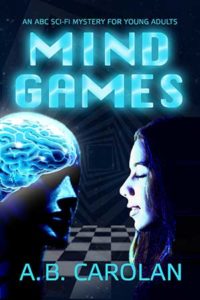Young adult literature…
We have left the days of Nancy Drew and the Hardy Boys far behind. Today’s young adult readers are more sophisticated and have a lot more on their plates than their parents and grandparents had at the same age. Although tween and teen angst have also morphed a bit, it’s only the names that have changed—that angst has always been present in one form or another. The same can be said for fads and cultural heroes.
The Harry Potter series started out as fantasy fiction focused on tweens and grew to be directed to older readers as the main characters grew. (The villains remained constant, though, discounting Draco Malfoy, who was but a carbon copy of his nefarious father, an adult.) The last Potter books are dark battles between good and evil. Although more verbose than a Stephen King work, those books are on a par with that Kingsian horror/fantasy genre—Carrie, for example. (King isn’t considered a YA author, but many of his books are YA. It is yet another example.)
The twelve-to-eighteen age group is now reading just about anything (if they read at all and avoid social media, computer games, and streaming video), so does “young adult literature” even make sense? Given that adults who are young at heart also enjoy such targeted books, I have to wonder. My alter-ego A.B. Carolan has adopted a different point of view: the only distinguishing characteristic of young adult novels today should be that their main characters are young adults in that age group worrying a lot about things appropriate to that group! By the very definition of good characterization in a novel, young adults will identify with those characters. That revolution was started with Heinlein’s Podkayne of Mars, and A.B. Carolan continues it.
In that sense, “young adult” isn’t even a genre. It’s only a descriptor indicating the age of the main characters. Thus you have YA romance, YA mysteries, and so forth. A.B. writes YA sci-fi mysteries a la Asimov’s Caves of Steel and The Naked Sun, but, in A.B.’s books, the main characters are young adults (if memory serves, I think old Asimov tried that at the beginning of Second Foundation). Adults can love reading them as well because they were once young adults and can identify with all those YA interests and angsts. I reread Podkayne not long ago and even got more from it than when I read it as a kid. And it has staying power far beyond those Potter fantasies.
A.B. could have written a series that starts with a tween and ends up with an eighteen-year-old just like Rowling. Instead he opted for a different focus: his main characters are different in each book, going from tweens in The Secret Lab to older teens in The Secret of the Urns and Mind Games. These books form a series only because all the books are part of what’s called the “ABC YA Sci-Fi Mysteries”—they occur centuries apart in the same future depicted in the “Chaos Chronicles Trilogy.”
I know many YA authors will probably disagree with me on these points. For those who do, we’ll just have to agree to disagree. Young adult literature is no longer the same as those Nancy Drew and Hardy Boys books. Denying that change makes no sense and might only upset current readers of that type of books.
***

Comments are always welcome.
“ABC YA Sci-Fi Mysteries.” This evergreen series contains A. B. Carolan’s three books, The Secret Lab, The Secret of the Urns, and Mind Games. They are full of sci-fi adventure and suspense as three different young heroines solve out-of-this world mysteries. They can be found in print and ebook format on Amazon and in ebook format on Smashwords and all its affiliated retailers (iBooks, B&N, Kobo, etc.) and library and lending services (Scribd, Oveerdrive, Baker & Taylor, Gardners, etc.). Hint for tweens and teens, and their school teachers and librarians: Reading these is fun…and can serve as easy book reports! And a new book from A.B. is coming soon!
Around the world and to the stars! In libris libertas!
